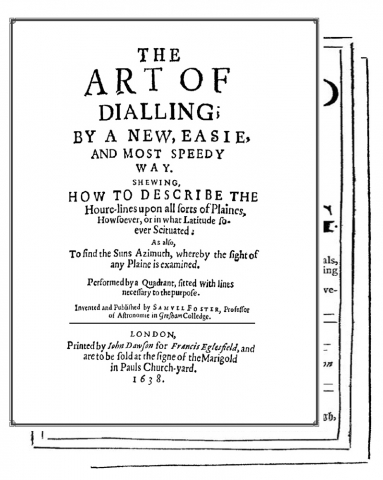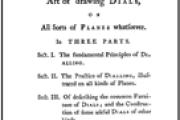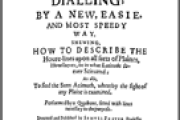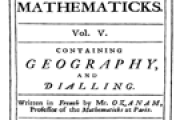Shadow Catchers - Complete Series
Until further notice, NASS Shop items cannot be sold or shipped to addresses in the EU.
The complete series of the Shadow Catchers download is available as a collection of PDFs, drawings, and illustrative artwork, providing a series of reprints of rare works on sundialing. Eight historical books are in this collection, with the earliest of Foster's Art of Dialling. Click on Product Details to find the rich content of this Shadow Catchers Series. The Complete Series. 256 MB. Upon payment, you will receive an email for instructions to download the file.
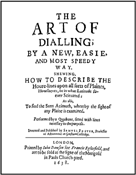 |
Vol I Foster - The Art of Dialling (1638) This first edition is probably the only one of Foster's works that he lived to see published. A second (and third) edition appeared 37 years later when William Leybourn published a version based on Foster’s manuscript notes for a revision. This book is the first to introduce the use of dialing scales in the layout of dials; it also includes a little known circular instrument that Foster invented as a precursor to the circular nomograms of the twentieth century. Download contains both the First (50 pages) and Second Editions (60 pages). This can be ordered from LuLu Books: Foster: Art of Dialling (1638) |
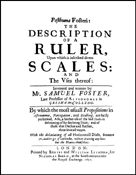 |
Vol II Foster - Posthuma Fosteri (1652) This book was published posthumously in the year that Foster died. It describes a ruler with 9 scales and gives instructions on how to use the scales to solve many of the standard problems of “astronomie, navigation, and dialling”. In addition to familiar trigonometric scales, the ruler includes two new scales introduced by Foster. The first provides an easy means of laying out horizontal dials between 30º and 60º of latitude without having to draw any auxiliary lines. The second is an innovation that Foster identifies simply as the C scale. With this scale and a chord scale, Foster is able to find all the elements needed to draw a dial on an arbitrary plane. He also uses these scales to replace the usual dialing scales, laying out a sundial from equispaced points on the circumference of a circle. (90 pages). This can be ordered in hard copy from LuLu Books: Foster: Posthumi Fosteri - The Description of a Ruler (1652) |
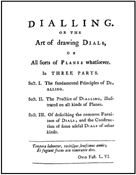 |
Vol III Emerson - Dialling (1770) Emerson (1701-82) was a schoolteacher and mathematician. He eventually gave up teaching and lived on the income from a small inheritance so that he could devote his time to study. He became an author well known for his “comprehensive grasp of all existing knowledge in all branches of his subject”. He published a defense of Newton’s Principia and authored a textbook on fluxions (calculus). Even 80 years after his death, “the works of this able mathematician…[were] still in high estimation”. The current work was originally bound with Emerson’s The Mathematical Principles of Geography. “[T]he first section contains the grounds of this art; by shewing, how the several requisites are to be found, by the intersections of the circles of the sphere, with the plane of the dial, from the principles of spherical trigonometry; from which the practical rules are deduced. The second section contains the practice, and three different ways of dial construction. (206 pages) This can be ordered in hard copy from LuLu Books: Emerson: Dialling Or The Art of Drawing Dials (1770) |
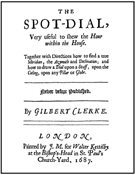 |
Vol IV Clerke - The Spot Dial (1687) Clerke (1626-1697?) gave private lessons in the mathematical arts and produced custom-made sundials. In 1682 he published Oughtredus explicatus, an edition of William Oughtred’s famous 1647 algebra textbook Clavis Mathematica. Clerke added a section on dialling, in which he described his invention of the spot-dial. Some years later, he was prevailed upon to write this brief English treatment of the dial. “I did not think to have written any more of Dialling, having delivered my Mind sufficiently at the End of my Oughtredus Explicatus; but being desired by a Neighbour Gentleman to make a fuller Description of the Spot-Dial, which I mention there…, I have now undertaken it, according to that Gentleman’s Desire, having had much Experience (since that writing was extant) both of the best wayes of drawing the Dial, and of the best Materials, and so much as I believe, that little will be added by him, that comes after, to what I shall here say. (30 pages) This can be ordered in hard copy from LuLu Books: Clerke: The Spot-Dial(1687) |
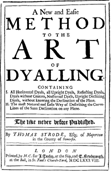 |
Vol V Strode - A New and Easie Method to the Art of Dylling (1688) CONTAINING I. All Horizontal Dyals, all Upright Dyals, Reflecting Dyals, Dyals without Centres, Nocturnal Dyals, Upright Declining Dyals, without knowing the Declination of the Plane. II. The most Natural and Easie Way of Describing the Curve-Lines of the Suns Declination on any Plane. The like never before Published. By Thomas Strode, Esq; of Maperton in the County of Somerset. LONDON. Printed, by H.C. for J. Taylor, at the Ship, and T. Newborough, at the Ball, in St. Paul's Church-Yard, MDCLXXXVIII. 1688. (72 pages) This can be ordered in hard copy from LuLu Books: Strode: A New and Easie Method To the Art of Dyalling (1688)
"To The Reader. Courteous Reader, This was chiefly composed for some near Relations; but the Method being Natural, Easie, and not Common, I think I ought to communicate, and not to Bury it with me. I do not Publish this as to prefer it before Trigonometrical Calculation of Dyals, for no way can be Exacter than that; but this is to save that Labour in Young Beginners, lest they should be dejected with the tediousness of the other. |
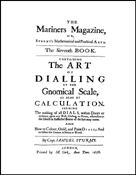 |
Vol VI Sturmy - The Art of Dialling By the Gnomonical Scale (1679) This is the seventh book from Sturmy's very popular The Mariners Magazine. The work originally appeared in 1669, and subsequently went through 3 more editions, “diligently revised and carefully corrected” by mathematician John Colson. This is the second edition. Unlike other entries in this Shadow Catcher Series, this reprint is done with modern fonts; the graphics are facsimile reproductions. This can be ordered in hard copy from LuLu Books: Sturmy: The Art of Dialling By the Gnomical Scale (1679) |
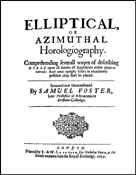 |
Vol VII Foster - Elliptical, or Azimuthal Horologiography (1654) This brilliant work, far ahead of its time, details Foster's development of analemmatic, circular, and diametral sundials and their generalizations. The title appeared earlier in compressed format as part of The Analemmatic Sundial Sourcebook. This can be ordered in hard copy from LuLu Books: Foster: Elliptical or Azimuthal Horologiography (1654) |
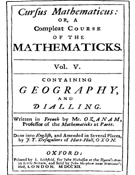 |
Vol VIII Jaques Ozanam - A Treatise on Gnomonicks (1712) Jacques Ozanam was a mathematician famous for his popular math texts.
Ozanam's dialing was instructive and entertaining - it includes innovative ideas such as a geographic sundial showing the time anywhere in the world, various universal horizontal dials, and the first suggestion that one's own body could be the gnomon of an analemmatic dial. His texts also cover altitude, azimuth, lunar, reflection, refraction, portable and stereographic projection dials – all in addition to the standard instruction in drawing sundials on any plane. This treatise is from the 1712 English translation (by the noted Newtonian scholar J.T. Desaguliers) of Ozanam's 1693 Course of Mathematics. The addendum is a 1708 English translation of the set of Problems of Dialling included in the 1st edition (1694) of his Recreations Mathematical & Physical. This can be ordered in hard copy from LuLu Books: Ozanam: A Treatise of Gnomonicks (1712) |

